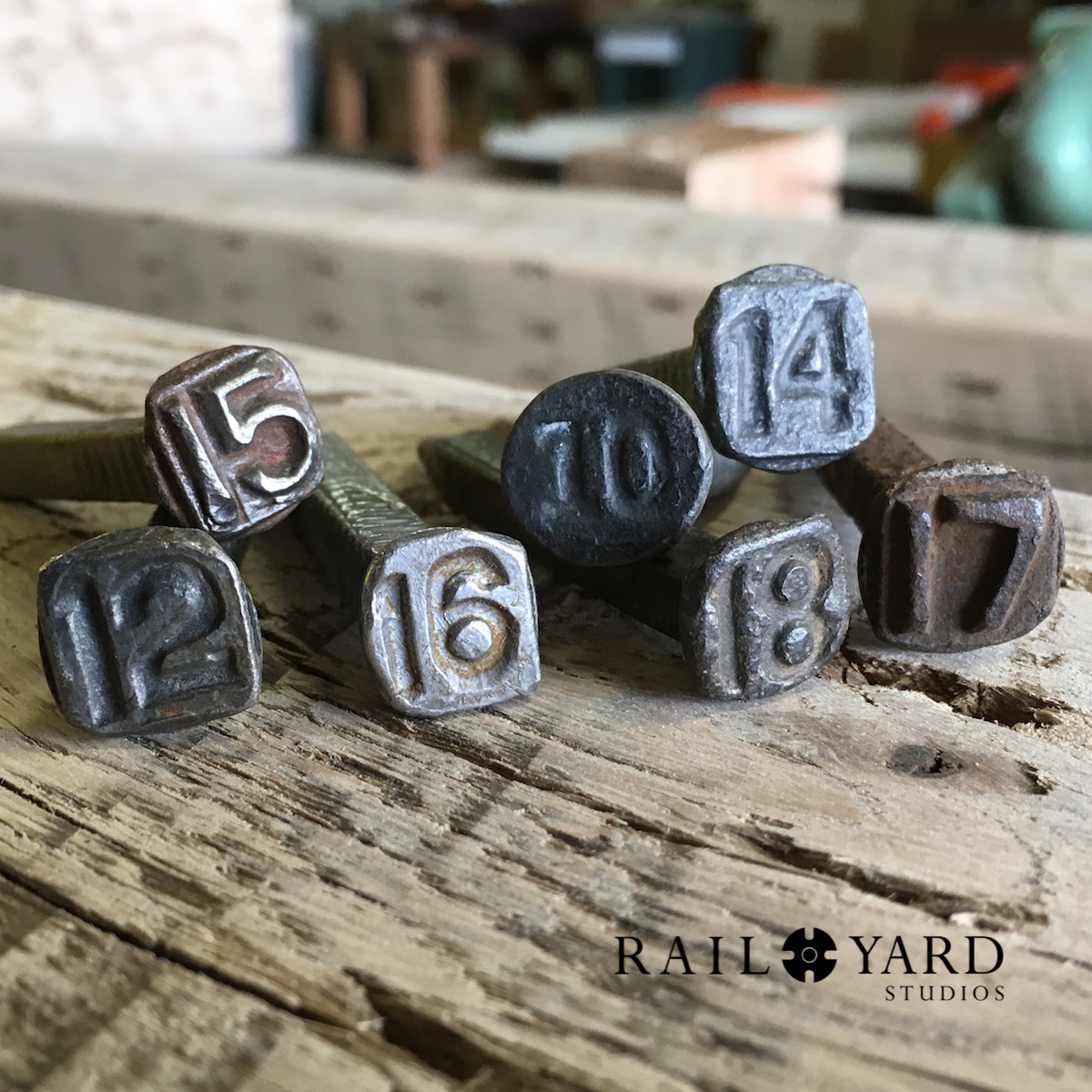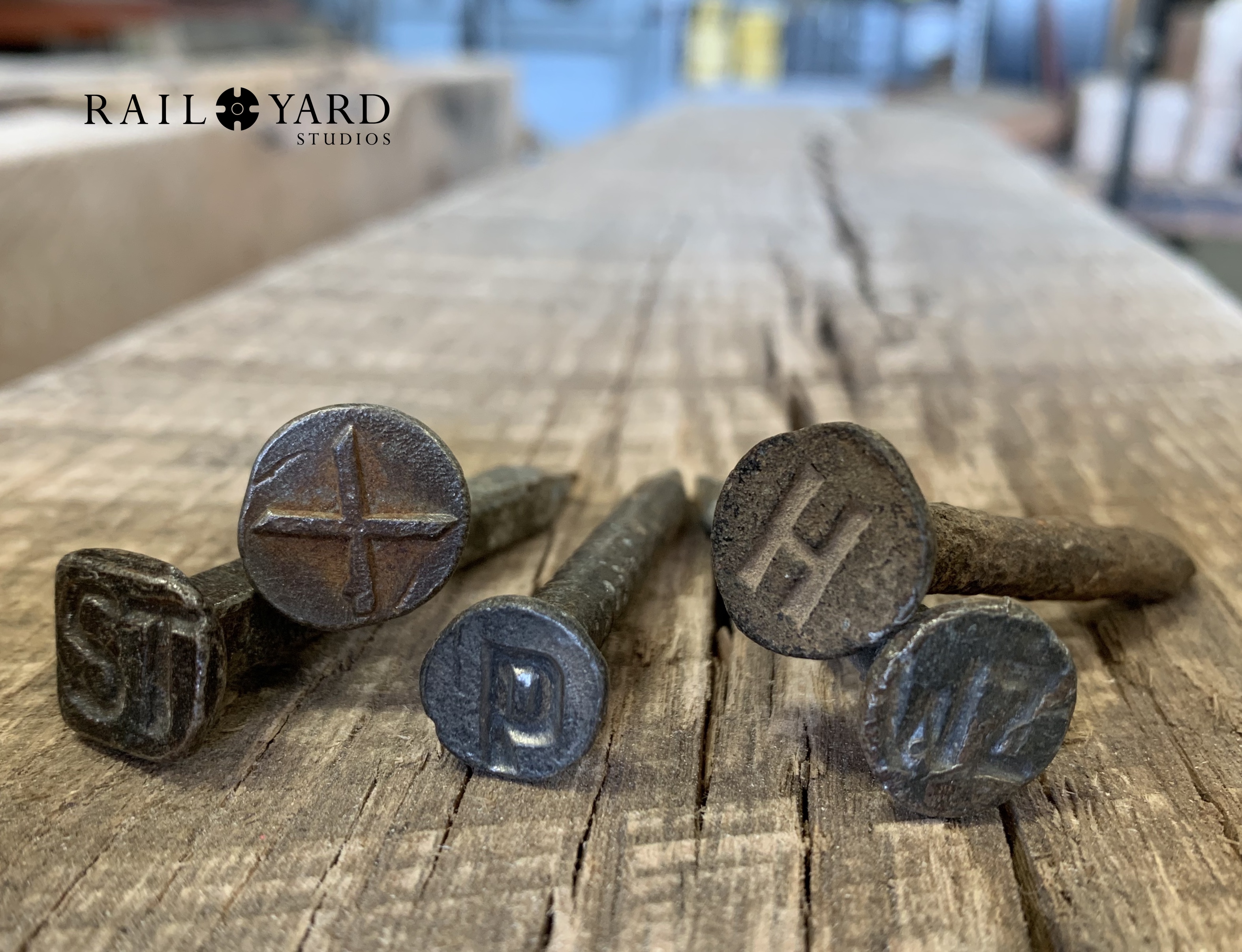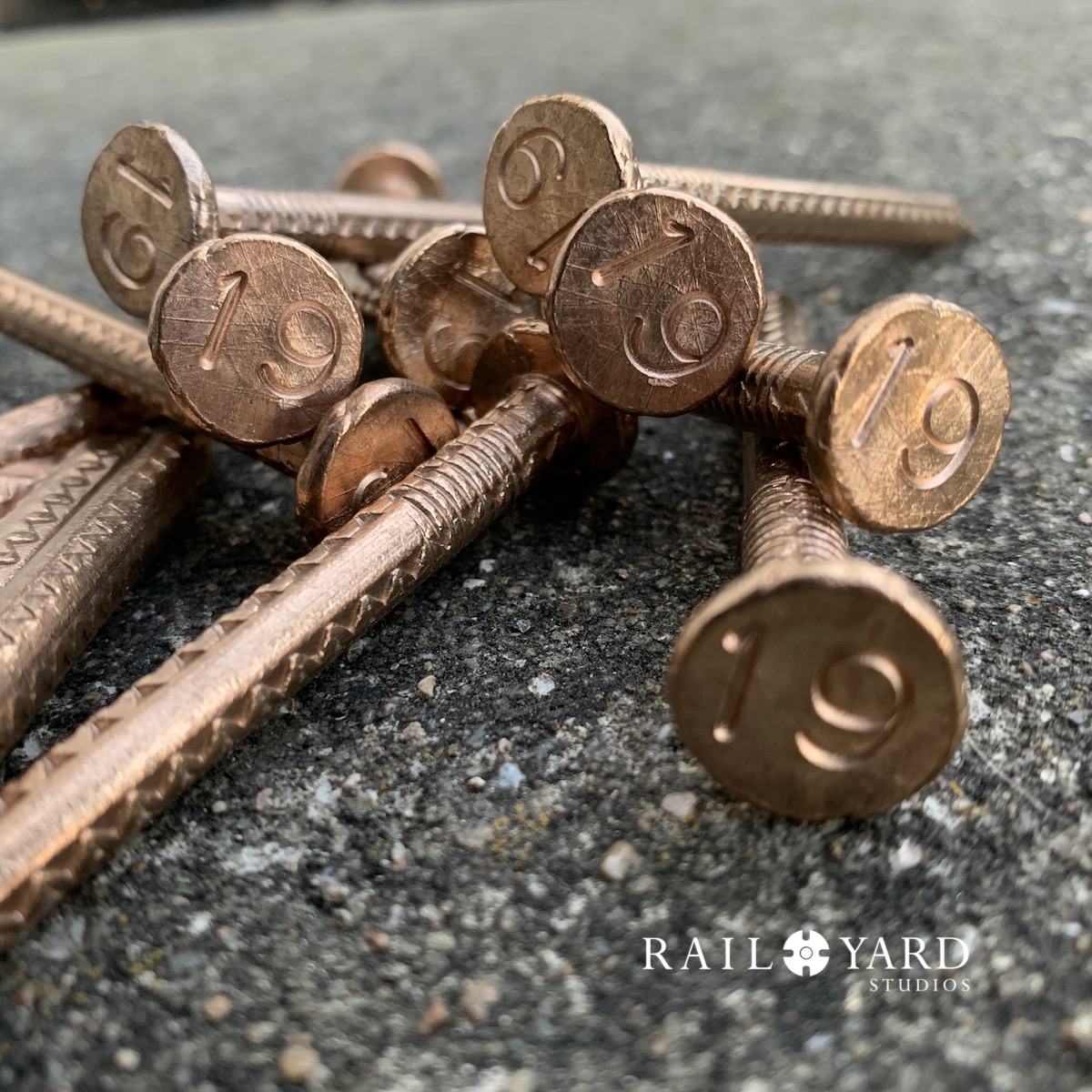
Railroad Date Nails
Posted by Robert Hendrick on Mar 26th 2020

Few railroad artifacts capture the eye like date nails. These small thumbnail-sized steel pieces of Americana bear a 2-digit number indicating the year a crosstie was manufactured. The various shapes and styles make each one unique and reflect changing styles across the decades. We install one in each piece of furniture we create: table, wine rack or otherwise.
While walking a line (with permission from our friends at the railroad!), we recognized what a privilege it was to be able to pluck a few of these beauties from the railbed. We also realized we had an obligation to share some of the history behind these unique artifacts.
HISTORY
Widely used by the railroad from 1900 to 1969, railroad date nails were first introduced in 1897 by the Mississippi River & Bonne Terre Railroad according to the Railway Tie Association (RTA).
Date nails served as a quality control measure allowing railroads and tie manufacturers to determine the lifespan of a wood timber crosstie. Through testing, they also helped as experts refined treatment processes, identified variations in performance among species of trees and determined how environmental conditions and climates impacted tie lifespan.

SHAPE
Shape serves as a more distinguishing characteristic among date nails. Most are round or square, however, diamond and pentagon shapes were also among the shapes used.
Either due to wear or manufacturing, some date nails appear to combine shapes like a square cast atop a circular head as seen on the 14 and 17 in the first photo.
STYLE
Numbers were either raised or inset during the casting of the nails. Each style came with its advantages and disadvantages. Inset letters might fill in with dirt and soot making them difficult to see, however, raised figures deformed more easily when struck during installation.
Note how the edges of the raised numbers in the freshly harvested date nails have been flattened in some places.
While inset figures tend to be more block letter style, raised numbers come in a block letter style as well as some with a bit of a flourish sometimes with almost a handwritten touch to them.

VARIATIONS
Two-digit numbers make up the vast majority of date nail markings; however, there are other single-digit number and letter variations to be found.
Single-digit nails were often used as a means for numbering switches or other structural elements of the railroad as opposed to the date.
Letters most often referred to tie condition or treatment methods. For example, an “X” usually identifies a cull tie otherwise referred to as a second.
SIZE
The heads tend to be ½-inch to 5/8-inch in diameter – around the size of a man’s fingernail or thumbnail.
The shank of a date nail runs 2-3" in length, although there are shorter and longer examples to be found. As far as railroad artifacts go, date nails are among the tiniest items to be found.

MATERIAL
Steel stands as the most common metal for date nails and most are aged to a gorgeous dark patina from exposure to the natural elements. Copper, iron, aluminum, and brass are also to be found though much rarer than the steel on most lines.
Today
Date nails are rarely used today. We see them used to indicate treatment methods within a plant or some rare instances of testing.
Modern date nails tend to be aluminum or bronze with the figures stamped into them rather than cast.
SAFETY
Please, Stay off the tracks.
Few date nails remain in the wild - they are an endangered species. The main lines have replaced virtually every tie since they discontinued date nail use in 1969. What might be left has already been scavenged by collectors. Best to get them in one of our pieces of furniture or from a date nail collector.
LEARN MORE
Want to know more about date nails? Check out the handy resource here from the University of Indianapolis.
